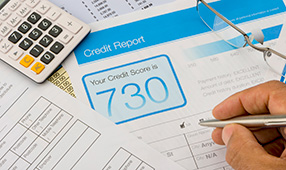Key takeaways
- Your three credit reports are a snapshot of how you handle credit and bill payments.
- Lenders, creditors and employers use credit reports to make decisions about your creditworthiness.
- It’s a good idea to review reports for errors from all three bureaus every year.
- Negative information like late or missed payments stay on your reports for seven years.
Your credit reports (three separate credit bureaus—Experian, TransUnion, and Equifax—compile reports on you) are powerful sources of information about how you pay bills and whether you have been sued, arrested or filed for bankruptcy. The credit bureaus sell the information in your report to creditors, insurers, employers and other businesses that use it to evaluate your applications for credit, loans, insurance, employment and renting a home.
A bad mark in your credit report might make it difficult for you to get a loan or a job. And if your identity has been stolen and the crook is running up debts in your name without your knowledge, your credit report will quickly implode. It’s critical that you make sure your report is accurate, complete and up-to-date!
Reviewing your reports
The government makes it easy to check your reports. The federal Fair Credit Reporting Act (FCRA) requires each of the big three credit bureaus to provide you with a free copy of your credit report, at your request, once every 12 months.
Since the information in your TransUnion report may differ slightly from your Experian or Equifax reports, you’ll want to review all three. One strategy for doing this is to stagger your free requests to one bureau each quarter. This allows you to check for major problems that would likely show up on all of your reports more frequently throughout the year. You can request your reports online or by calling 877-322-8228.
When you get your report, go through it carefully to make certain everything is accurate, including your name, address and other personal information.
Correcting errors
Under the FCRA, both the credit bureau and the information provider (that is, the person, company or organization that provides information about you to the agency) are responsible for correcting inaccurate or incomplete information in your report. If you find errors, contact each credit bureau and follow their instructions on how to file a dispute.
You may also want to contact the information provider to alert them that they have made a mistake in their reporting. You’ll need plenty of documentation as proof. The provider is required to investigate your dispute and if they find in your favor, they must notify all three credit bureaus of their error. You should still check your reports after this has been done to make sure the errors have been removed. It may take some effort on your part to complete the process.
Adding accounts to your file
You have to use credit responsibly to build a credit report that looks attractive to lenders. If your credit file is so lean that you are denied credit because of an “insufficient credit file” or “no credit file” and you have accounts with creditors that don’t appear in your credit file, ask these creditors to report your accounts to the credit bureaus. Some travel, entertainment, gasoline card companies, local retailers and credit unions are among the creditors that may not routinely report to the credit agencies. But they might do it if you specifically request it.
You can try to make this request directly to the credit bureaus but they are not required to add information just because you ask them to. Even if you can get the bureaus to add your information, if the creditors don’t report to the bureaus on a regular basis, your added items will not get updated in your file.
Removing negative information
When negative information in your report is accurate, only the passage of time will get it removed from your files. Generally, negative information such as late or missed payments, and accounts that have been assigned to collection agencies remain on your reports for about seven years. Bankruptcies may stay in your files for up to 10 years, depending on the type of bankruptcy. On the other hand, positive information, such as active credit accounts that are being paid on time will stay on your reports for as long as the accounts remain open and the creditors are reporting them.












